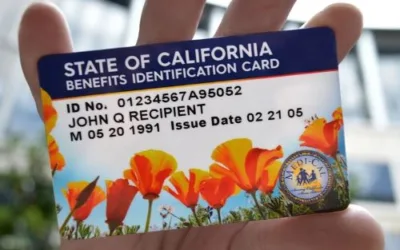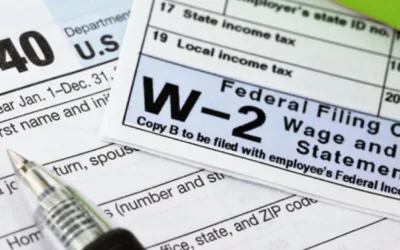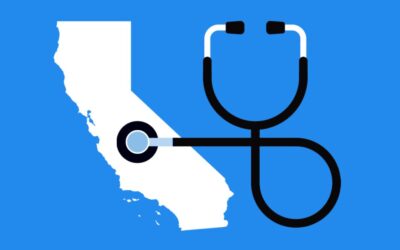
Navigating the Transition from Covered California to Medicare
As we age, our health insurance needs and options evolve. Understanding this evolution is crucial, especially as you approach the age of 65. This is the threshold where Medicare becomes a pivotal player in your healthcare journey. Before diving into the transition, let’s define what Covered California and Medicare are.
Covered California is the state’s marketplace for the Affordable Care Act (ACA) plans. It’s designed for individuals and families who do not have access to affordable health insurance through their employer or another government program. These plans offer a range of coverage options, with subsidies available based on income to help make insurance more affordable.
Medicare, on the other hand, is a federal health insurance program primarily for people aged 65 and older. It also serves people under 65 with certain disabilities and individuals of any age with End-Stage Renal Disease (ESRD). Medicare is broken down into parts: Part A (hospital insurance), Part B (medical insurance), Part C (Medicare Advantage Plans), and Part D (prescription drug coverage).
Understanding Eligibility Requirements
Medicare eligibility kicks in when you turn 65, regardless of your income. You’re also eligible if you’re under 65 and have a qualifying disability or ESRD. Enrollment begins three months before your 65th birthday and continues for seven months, giving you ample time to make decisions without rushing.
In contrast, Covered California eligibility is not age-based. It is open to all legal residents of California who do not have access to affordable health insurance through other means and are not enrolled in Medicare. The primary factor for eligibility here is income, as it determines the level of financial assistance or subsidies you can receive.
Key Differences Between Covered California and Medicare
When it comes to coverage, Medicare generally offers broader access to health care providers nationwide, whereas Covered California plans may have more localized networks. This distinction is critical for those who travel frequently or live in multiple states throughout the year.
Premiums and subsidies present another stark contrast. Covered California offers income-based subsidies to lower the cost of premiums, deductibles, and other out-of-pocket expenses. Medicare does not offer such subsidies; however, it does provide different options to help with costs, like Medicaid and the Medicare Savings Program for those who qualify.
Lastly, the enrollment periods for the two programs are quite different. Covered California has an annual open enrollment period and special enrollment periods triggered by life events such as losing other coverage or moving. Medicare has an Initial Enrollment Period around your 65th birthday, General Enrollment Periods if you miss your initial window, and Special Enrollment Periods for certain situations.
Understanding these distinctions is not just about making an informed choice; it’s about ensuring uninterrupted, affordable, and comprehensive health care as you transition into a new chapter of your life.

Timeline for Transitioning from Covered California to Medicare
Navigating the shift from Covered California to Medicare need not be complex with the right timeline and steps in place. It’s a process that requires timely planning and action, particularly as you approach the age of 65. Here’s how you can stay on track:
When to Start Considering the Transition
- Before Turning 65: Ideally, begin gathering information about Medicare 6 to 9 months before your 65th birthday. This gives you sufficient time to understand your options without pressure.
- Initial Enrollment Period (IEP): This is a 7-month period that includes the three months before your 65th birthday month, your birthday month, and the three months after. It’s crucial to enroll during this time to avoid late enrollment penalties.
Important Dates and Deadlines for Medicare Enrollment
- Initial Enrollment Period: Starts 3 months before you turn 65 and ends 3 months after that month.
- General Enrollment Period: If you miss the IEP, you can enroll between January 1st and March 31st each year, with coverage starting July 1st.
- Special Enrollment Period: If you’re covered under a group health plan based on current employment, you have an 8-month period to sign up for Part A and/or Part B that starts the month after the employment ends or the coverage ends, whichever happens first.
Steps to Transition from Covered California to Medicare
- Review Your Current Health Coverage: Assess your current Covered California plan and understand how it works with Medicare.
- Gather Necessary Documents: Collect personal identification and current health insurance information, including your Social Security number, proof of residency, and employment details if applicable.
- Contact Social Security: Three months before turning 65, reach out to the Social Security Administration to begin your Medicare enrollment process.
- Choose Your Medicare Plan: Decide if you will go with Original Medicare (Part A and B), add a Prescription Drug Plan (Part D), or choose a Medicare Advantage Plan (Part C).
- Disenroll from Covered California: Coordinate the end of your Covered California plan with the start of your Medicare coverage to avoid any gaps.
Managing Costs and Budgeting
- Understand the Costs: Be aware that Medicare Part A is premium-free for most, while Part B comes with a standard monthly premium. Part C and D costs vary by plan.
- Budget for Out-of-Pocket Costs: Set aside funds for deductibles, copayments, and coinsurance. Consider purchasing Medigap insurance to cover these expenses.
- Evaluate Your Savings: Assess your savings to cover healthcare costs in retirement and consider working with a financial advisor for personalized planning.
Remember, transitioning to Medicare from Covered California is a significant milestone in your healthcare journey. By following these steps, you can make the transition smoothly and ensure you have the coverage you need without financial strain.

Medicare Advantage vs. Medicare Supplement Plans
When it comes to enhancing Original Medicare, beneficiaries in California have two primary options: Medicare Advantage (Part C) and Medicare Supplement (Medigap) plans. Each offers different benefits and can impact your healthcare experience.
Medicare Advantage Plans
Medicare Advantage Plans are an alternative to Original Medicare, offered by private insurance companies approved by Medicare. These plans combine Part A (hospital insurance) and Part B (medical insurance), and often include Part D (prescription drug coverage) as well.
- Similarities to Covered California: Like Covered California, Medicare Advantage plans may have network restrictions, requiring you to see doctors within a specific network.
- Differences: Unlike Covered California, which offers plans based on income levels, Medicare Advantage is available to all Medicare enrollees and often includes additional benefits like dental, vision, and hearing coverage.
Medicare Supplement Plans
Medigap policies supplement your Original Medicare coverage. They are designed to help pay some of the healthcare costs that Original Medicare doesn’t cover, like copayments, coinsurance, and deductibles.
- Comparison: Medigap plans do not replace Original Medicare; they complement it. They are more akin to the additional coverage options you might find in Covered California but do not offer stand-alone benefits.
Prescription Drug Coverage
Medicare Part D provides prescription drug coverage. It is available to anyone who has Medicare Part A and/or Part B.
- Differences from Covered California: The prescription drug coverage under Covered California is usually included within the health plan you choose, while Medicare Part D is optional and requires enrollment in a stand-alone plan if you have Original Medicare, or it can be included in a Medicare Advantage Plan.
Impact on Existing Medical Treatments
Transitioning from Covered California to Medicare can raise concerns about continuity of care, especially for those with ongoing medical treatments.
- Ensure Continuity of Care: Before transitioning, review the Medicare plan’s formulary to ensure that your current medications are covered. If you have a preferred healthcare provider, check that they are in-network for Medicare Advantage or accept Medicare assignment if you’re opting for Original Medicare with a Medigap plan.
- Speak with Healthcare Providers: Discuss the transition with your current doctors to ensure they are aware of the change and to confirm they accept Medicare.
By understanding the differences between Medicare Advantage and Medicare Supplement plans, and how prescription drug coverage works with Medicare, you can make an informed decision that ensures your healthcare needs continue to be met without interruption.

Resources and Assistance
Navigating the Medicare landscape can be complex, but a wealth of resources is available to guide you through the transition. Here are several you can tap into for additional help:
- Medicare Hotline: Call 1-800-MEDICARE (1-800-633-4227) for 24/7 assistance on any Medicare-related questions.
- State Health Insurance Assistance Programs (SHIP): California’s SHIP, known as the California Health Insurance Counseling & Advocacy Program (HICAP), offers free, unbiased counseling for Medicare beneficiaries.
- Medicare.gov: This is the official U.S. government site for Medicare, where you can find detailed information and enroll in plans.
Resources Specific to California Residents
- Covered California: For questions about your current plan or transitioning, visit Covered California’s website or call their service center at 1-800-300-1506.
- California Department of Aging: Offers programs and services that provide support to older adults, accessible via their website.
Frequently Asked Questions (FAQs)
Q: When should I start the process of transitioning to Medicare from Covered California? A: Begin researching your options 6 to 9 months before your 65th birthday to ensure a smooth transition.
Q: Will my current doctors accept Medicare? A: Check with your healthcare providers to ensure they accept Medicare or are in-network for your chosen Medicare Advantage plan.
Q: Can I keep my Covered California plan and enroll in Medicare? A: Generally, once you’re eligible for Medicare, you should transition to it as it becomes your primary insurance coverage.
Conclusion and Next Steps
As you approach 65, transitioning from Covered California to Medicare requires timely planning. Understand the differences between Medicare Advantage and Supplement plans, the importance of prescription drug coverage, and how to maintain continuity of care. Leverage available resources and don’t hesitate to seek counseling for personalized advice.
Act promptly to align your healthcare coverage with your age and needs. By taking the steps outlined and utilizing the provided resources, you can navigate this transition with confidence and ease.
Checklist for Transitioning from Covered California to Medicare
To facilitate a smooth transition from Covered California to Medicare, I’ve compiled a comprehensive checklist. This tool is designed to guide you step by step, ensuring you don’t miss any critical actions.
Transition Checklist:
- Confirm Your Eligibility for Medicare:
- Verify age or disability status requirements.
- Understand Your Medicare Enrollment Periods:
- Mark your calendar with the Initial Enrollment Period and other key Medicare dates.
- Research Medicare Plans:
- Investigate the differences between Original Medicare, Medicare Advantage, and Medigap plans.
- Review Your Current Health Coverage:
- Assess how your current plan’s benefits compare to Medicare options.
- Gather Necessary Documentation:
- Prepare identification, proof of residency, and any existing health insurance information.
- Enroll in Medicare:
- Contact Social Security to initiate your Medicare enrollment at least three months before turning 65.
- Select Additional Coverage if Needed:
- Decide if you need Part D for prescriptions, or if a Medicare Advantage or Medigap plan is right for you.
- Coordinate with Your Healthcare Providers:
- Ensure your current doctors and specialists accept Medicare.
- Budget for Out-of-Pocket Costs:
- Plan for premiums, deductibles, and any additional costs.
- Notify Covered California of Your Transition:
- Disenroll from Covered California to avoid any overlap or penalties.
Testimonials and Case Studies
Hearing from those who’ve successfully navigated the transition can provide reassurance. On our website, we feature stories from Californians like John, a Fresno local who found that shifting to Medicare gave him wider healthcare access and savings on his prescriptions, or Maria from San Diego who utilized a Medicare Advantage plan to get additional vision and dental benefits.
Interactive Tools and Calculators
To further assist in planning your transition, we offer interactive tools and calculators on our website. These resources can help you estimate your potential costs with Medicare and compare plans based on your specific needs and budget.
Call-to-Action
As you consider your transition from Covered California to Medicare, remember that you’re not alone. For personalized assistance and expert guidance, please reach out to [Your Enrollment Center’s Name]. Our dedicated team is committed to helping you find the best healthcare solution that fits your lifestyle and budget.
Contact us today to ensure your transition to Medicare is as seamless and beneficial as possible.
This article was written by Mark Svetlik, with the assistance of automation technology. The content has undergone thorough editing and fact-checking to ensure complete accuracy.














































